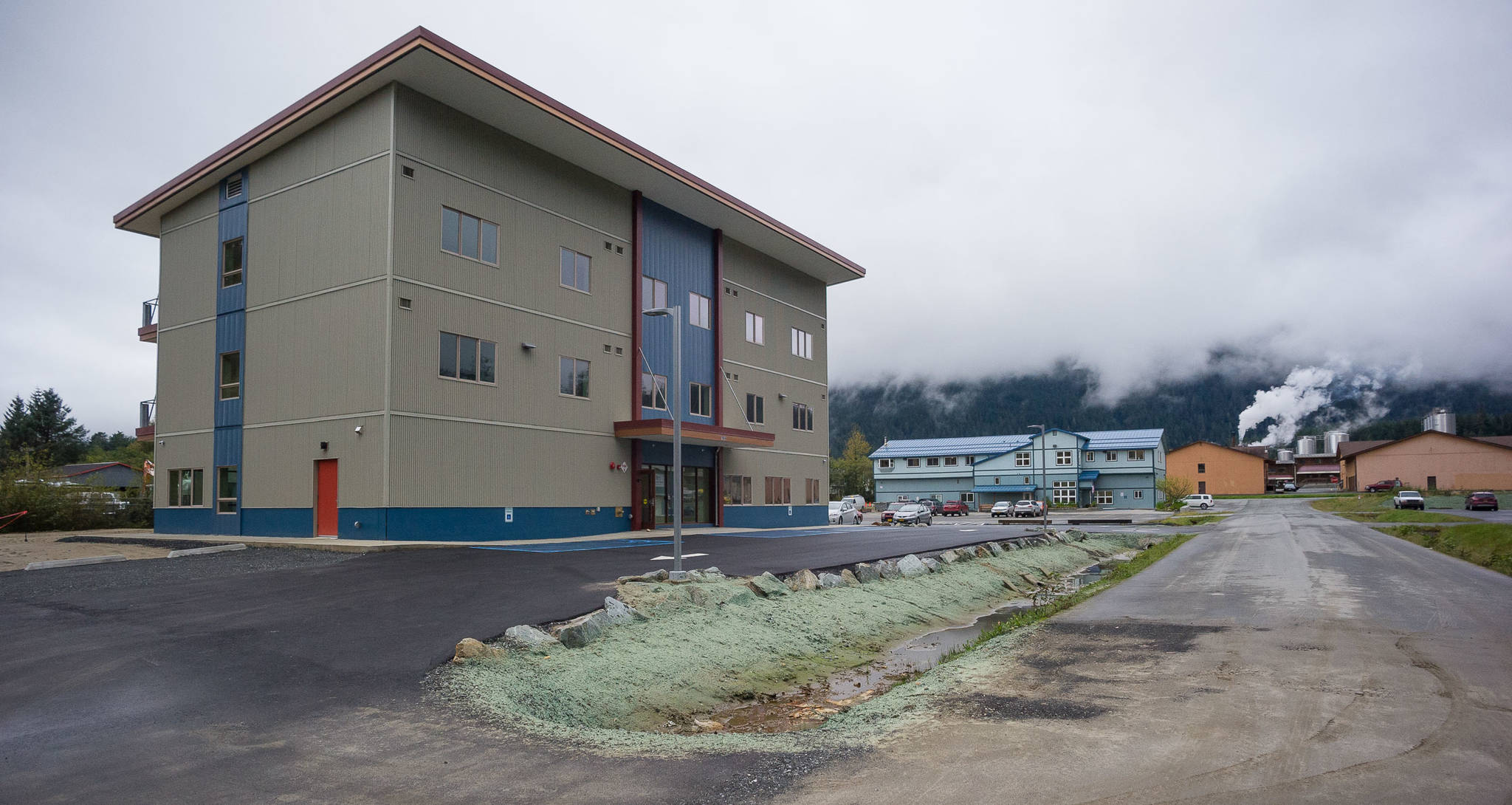Work on the second phase of Housing First is about to begin, and the group running the facility is in the final stages of its fundraising efforts.
The Juneau Housing First Collaborative (JHFC) has raised $5.8 million of its $6.1 million goal, board member and Glory Hall Executive Director Mariya Lovishchuk said Wednesday. She said the foundation for the new part of the facility should start getting put down in June, and that construction is estimated to be done next spring.
Housing First is a 32-bed facility that provides housing for Juneau’s most vulnerable residents, with the hope that putting a roof over someone’s head will lead to them being able to get back on their feet. All 32 beds are currently full, Lovishchuk said, and the building has been at capacity for almost the entire time it’s been open since fall 2017. There is also a wait list to get in.
The second phase of the project will include 32 more beds. The expansion was always in the plan, but construction is happening sooner than many expected. As Lovishchuk has explained previously, grant money from the Alaska Housing Finance Corporation (AHFC) became available much sooner than expected. That grant, in the amount of about $2.5 million, kick-started the JHFC’s fundraising efforts.
[Back on their feet: Family of seven was homeless until this program came along]
Since then, the City and Borough of Juneau ($1.8 million), Alaska Mental Health Trust Authority ($350,000), Bartlett Regional Hospital ($250,000), Premera Blue Cross ($250,000) and a few other organizations have donated to the cause, Lovishchuk said, bringing the fundraising total to about $5.8 million. She’s especially excited to see new donors in the medical field (BRH and Premera Blue Cross) pledging their support.
“I think it really demonstrates that the project is contributing to better outcomes for patients and more efficient delivery of care,” Lovishchuk said. “That’s really wonderful to get the donations from them. It really shows that they believe in the project because they saw how it worked in phase one.”
People can donate through the Juneau Community Foundation, Lovishchuk said, by specifically requesting that their donations go to Housing First.
The University of Alaska Fairbanks conducted a study to compile statistics specifically about the residents of Housing First and their usage of emergency care. Prior to living in Housing First, according to the study, the residents of the facility visited the emergency room 360 times in the six months prior to moving in. In the six months after moving in, they went to the emergency room 97 times (a decrease of 73 percent).
[Dunleavy’s request could lead to money for health, homeless organizations]
This fall, Lovishchuk said, the JHFC will do another study to determine who the most vulnerable Juneau residents are to have a list ready for the spring. Over the course of the summer, residents will move into the building a few at a time to make the transition easier for residents and staff, Lovishchuk said.
When the original facility opened in 2017, many community members banded together to contribute what they could to Housing First. A couple quilting groups, for example, sewed quilts for Housing First residents to make their beds more inviting. Lovishchuk said she hopes community members will continue thinking of those moving into Housing First, and that people can reach out to her at lovishchuk.mariya@gmail.com to set up something.
“It really made a huge difference for people,” Lovishchuk said of the quilting project. “They felt welcome and like they were moving into a home. That’s what we were trying to have a feeling of.”
• Contact reporter Alex McCarthy at amccarthy@juneauempire.com. Follow him on Twitter at @akmccarthy.

